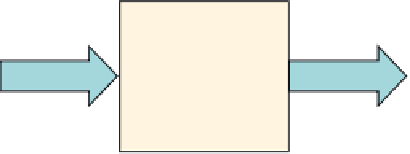Environmental Engineering Reference
In-Depth Information
globe. Both are ecosystems, but they hardly seem comparable in that the flask results
would seemingly have little relevance to global carbon cycling studies. A further concern
is whether ecosystems are subject to repeatable investigation where suitably controlled
experimental studies can be conducted. If not, then ecosystems might fall outside the
norms of scientific study for testing questions and drawing conclusions.
These considerations lead to the thought that the ecosystem concept might be too
abstract to be useful. Ecosystems are heterogeneous with varying sizes, structures, and
components. Can we compare (and contrast) ecosystems like a forest and field in the same
way as other forms of biological organization (e.g., populations, organisms, organs, tissues,
cells)? Can we experimentally manipulate conditions in a forest or a field to test a
response in the same way we can measure the responses of organisms or cells to an exper-
imental manipulation? This chapter addresses these issues by evaluating aspects of the
ecosystem concept. The focus is on boundaries that separate the internal from external,
allowing the establishment of budgets, and on inclusiveness and flexibility in defining the
internal components of ecosystems. Evaluation of these aspects of the ecosystem concept
leads to a consideration of whether it is possible to generalize about ecosystems and to
develop predictions about their responses both to internal and external changes.
BUDGETS AND BOUNDARIES
By defining boundaries the investigator establishes an ecosystem. As noted earlier, eco-
systems can be any size and so ecosystems are scale-independent, meaning they are not
defined by a particular spatial scale. Boundaries are defined according to the question of
interest. Frequently, boundaries are made at some convenient and easily identified loca-
tion such as a shoreline or transition from one vegetation type to another (field to forest).
Boundaries are also established to define cohesive units. For example, watersheds often
serve as convenient boundaries as they enclose a hydrologically cohesive unit.
The establishment of a boundary separates what is external to the ecosystem from what
is internal. Fluxes across the boundary are inputs and outputs (
Figure 9.1
) and the sim-
plest ecosystem budget is:
Inputs
Outputs
Storage
ð
9
1
Þ
5
1
:
Boundary
Inputs
Ecosystem
Outputs
FIGURE 9.1
A simple input
output diagram for an ecosystem.






